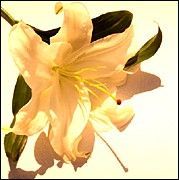When we talk about fertility, the focus is often placed on the ovaries and the uterus. Yet sperm-related factors contribute to nearly half of all cases of infertility. Whether someone is navigating fertility care alone or with a partner, and whether building a family through intercourse, IVI, IUI or IVF, it’s vital to include sperm health in the picture.
Herbs & Botanicals
Magnolia Flower (xin yi hua)
What is magnolia flower? What is it used for?
Magnolia flowers come from the magnolia tree, which grows throughout eastern Asia, North America and Central America. The flowers are cuplike and fragrant, with between six and 12 petals apiece, and range in color from white to pink to purple.
The flower buds and petals are collected in early spring when the bud is not in blossom, then dried in the sun and cleared of debris for use in herbal preparations.
 In traditional Chinese medicine, magnolia flower has pungent and warm properties, and is associated with the Lung and Stomach meridians. Magnolia flower is typically used to treat nasal conditions, such as stuffy nose, nasal obstructions, congestion, and sinus headaches. An ointment of magnolia flower can also be applied to the skin.
In traditional Chinese medicine, magnolia flower has pungent and warm properties, and is associated with the Lung and Stomach meridians. Magnolia flower is typically used to treat nasal conditions, such as stuffy nose, nasal obstructions, congestion, and sinus headaches. An ointment of magnolia flower can also be applied to the skin.
How much magnolia flower should I take?
The typical dosage of magnolia flower is between 3 and 9 grams, boiled in water as a decoction. Larger amounts can be applied to the skin as necessary.
What forms of magnolia flower are available?
Magnolia flower is available in a variety of forms, ranging from pills and powders to decoctions and ointments. If it is being decocted, magnolia flower should be wrapped in cloth before being placed in boiling water.
What can happen if I take too much magnolia flower? Are there any interactions I should be aware of? What precautions should I take?
Magnolia bark has been given a class 1 rating by the American Herbal Products Association, meaning that it can be consumed safely when administered in the proper dosage. However, magnolia flower should not be taken by patients with heat or fire due to yin deficiency; large amounts may cause dizziness and redness of the eyes. As of this writing, there are no known drug interactions associated with magnolia bark. As always, make sure to consult with a licensed health care provider before taking magnolia bark or any other herbal remedy or dietary supplement.
References
- Kim GC, Lee SG, Park BS, et al. Magnoliae flos induces apoptosis of RBL-2H3 cells via mitochondria and caspase. Int Arch Allergy Immunol June 2003;131(2):101-10.
- McGuffin M, Hobbs C, Upton R, et al. (eds.) American Herbal Products Association's Botanical Safety Handbook. Boca Raton, FL: CRC Press, 1997, pp. 72-73.
- Si J. Magnolia Officinalis Development Project. Jingning Science and Technology Development Department, Zhejiang, China, 2000.
- Song WZ, Cui JF, Zhang GD. Studies on the medicinal plants of the magnoliaceae tuhoupo of manglietia. Journal of Chinese Herbs 1989;24(4);295-299.
- Wang JP, et al. Anti-inflammatory and analgesic effects of magnolol. Archives of Pharmacology 1992;346(6):707-712.


